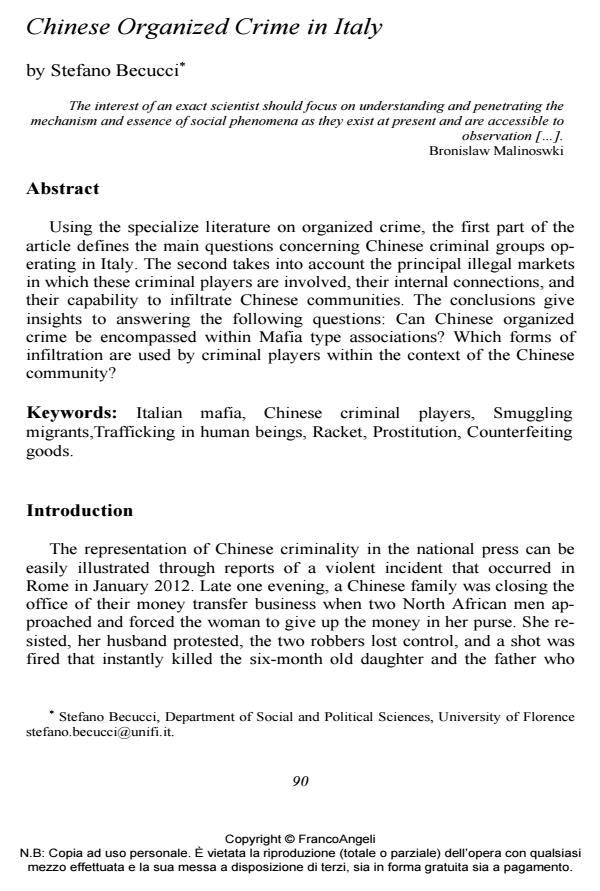Chinese Organized Crime in Italy
Journal title SICUREZZA E SCIENZE SOCIALI
Author/s Stefano Becucci
Publishing Year 2014 Issue 2013/3EN
Language English Pages 21 P. 90-110 File size 637 KB
DOI 10.3280/SISS2013-003007EN
DOI is like a bar code for intellectual property: to have more infomation
click here
Below, you can see the article first page
If you want to buy this article in PDF format, you can do it, following the instructions to buy download credits

FrancoAngeli is member of Publishers International Linking Association, Inc (PILA), a not-for-profit association which run the CrossRef service enabling links to and from online scholarly content.
Using the specialize literature on organized crime, the first part of the article defines the main questions concerning Chinese criminal groups operating in Italy. The second takes into account the principal illegal markets in which these criminal players are involved, their internal connections, and their capability to infiltrate Chinese communities. The conclusions give insights to answering the following questions: Can Chinese organized crime be encompassed within Mafia type associations? Which forms of infiltration are used by criminal players within the context of the Chinese community?
Keywords: Italian mafia, Chinese criminal players, Smuggling migrants,Trafficking in human beings, Racket, Prostitution, Counterfeiting goods.
Stefano Becucci, Chinese Organized Crime in Italy in "SICUREZZA E SCIENZE SOCIALI" 3EN/2013, pp 90-110, DOI: 10.3280/SISS2013-003007EN